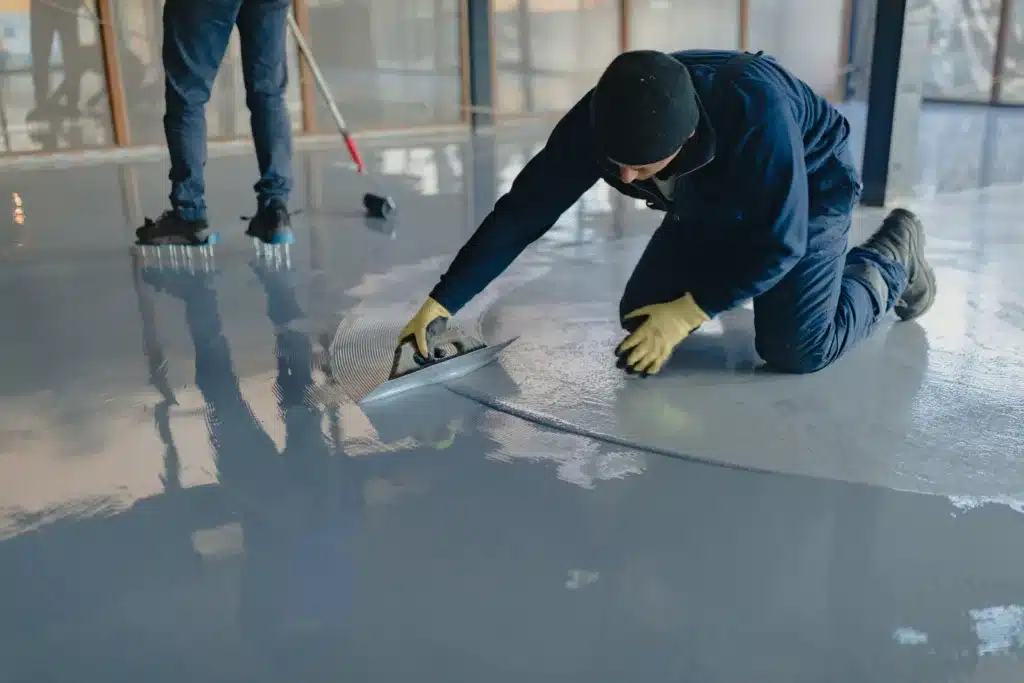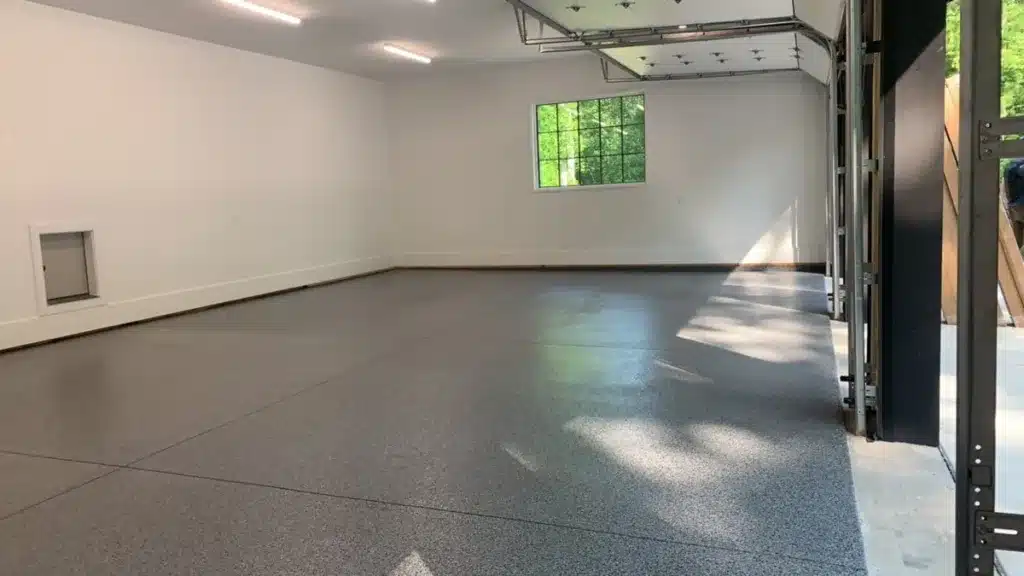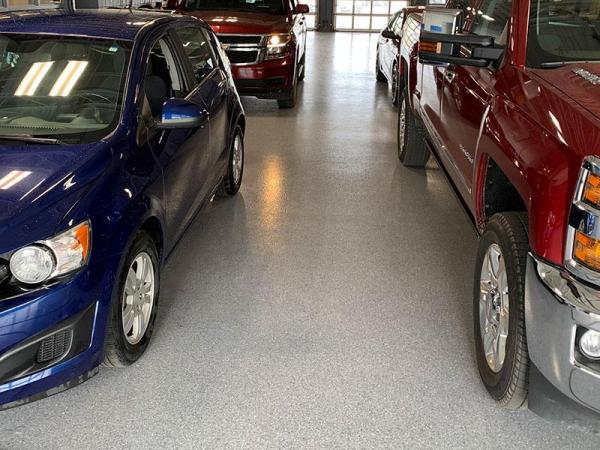What is the Difference Between Polyurea vs Polyaspartic Coatings?
Knowing the difference between polyurea vs polyaspartic coatings can be confusing because they are quite similar. The main difference between the two is that all polyaspartics are a polyurea, but not all polyureas are a polyaspartic. So, a polyaspartic coating is a type of polyurea coating.
Polyurea and polyaspartic coatings are both solid choices for base coat applications. High quality coatings provide adequate adhesion to residential and commercial concrete at the time of installation. However, polyaspartic coatings provide a greater bond strength than polyurea coatings.
High-end epoxies and polyureas provide a good base coat, but polyaspartic is the main material recommended for top coat applications because of its highly resistant properties.
Is Polyurea Better than Polyaspartic?
Polyurea is a two-component product. When the two components are mixed together, they result in a mixture that hardens within minutes, which is why it takes professionals to apply.
A polyaspartic coating is a polyurea coating with a more slowed-down curing rate. With a slower curing time, garage floor coating experts can ensure that a floor is covered evenly before it hardens. Even with the slowed curing rate, polyaspartic coatings still dry rapidly so professionals have to be efficient with their time.
Polyurea is not UV resistant so it is better for indoor applications. Polyaspartics are the preferred option for outdoor applications, since they are UV resistant and extremely durable. The slick-ness of polyaspartics can be lessened by mixing in a grit additive to the top coat for slip resistance.
Polyaspartics are chemically and technically superior to other polyureas. They go on thicker, can cover a full flake system in a single coat, and have higher solid content. Overall, polyaspartic coatings are better if someone is looking for a more heavy duty and durable finish to their floor.
When comparing polyurea vs polyaspartic coatings, they they share several advantages and disadvantages. Analyzing the two coatings in detail can provide a more clear picture of the difference between them.
What is a Polyurea Coating?
Polyurea coating is a type of elastomer derived from the reaction between an isocyanate component and a synthetic resin blend component. Polyurea floor coatings are common for the following reasons:
Fast Curing Time
Polyurea coatings have a relatively fast curing time, making it ideal for companies or homeowners who want the job done quickly (often in a single day). With an extremely fast curing time comes the risk of a weaker bond and greater chance of installation imperfections showing if professionals don’t work fast enough.
Insensitive to Moisture
For floors that are exposed to moisture and liquids, polyurea coatings are ideal. The chemical arrangement of polyurea makes it insensitive to moisture. Because of this ability to withstand moisture, polyurea is a popular ingredient in several types of paints and coatings.
Inexpensive
Polyurea coatings are very inexpensive to make. They are a cheaper option for installers and owners when compared to polyaspartics and epoxies. Because of the affordability of polyurea coatings, many manufacturers adamantly promote them as basecoats.
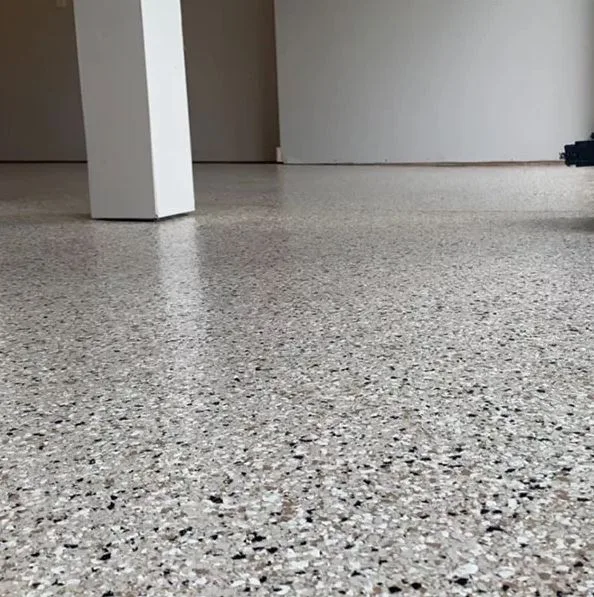
What is a Polyaspartic Coating?
Highly refined resins and hardeners are incorporated into polyaspartic coatings. Because of this, the cost of polyaspartics is generally higher when compared to polyureas and epoxies. A higher cost also means that the performance of polyaspartic coatings is higher than alternative options.
UV Resistant
Polyaspartic coatings are known for their exceptional UV resistance, making them the favored choice for outdoor projects. UV resistance in polyaspartic coatings is primarily attributed to the chemical structure of polyaspartic esters. They contain high levels of aliphatic groups, which are more stable and susceptible to degradation when exposed to UV light compared to aromatic groups commonly found in other types of coatings. Polyaspartics are the only product that do not experience UV degradation and will not discolor.
Low VOCs
VOC stands for “volatile organic compound” and refers to a class of chemicals that begin to vaporize under typical indoor temperature and pressure conditions. VOCs are present in many products such as paint, air fresheners, magazines, and carpet. High levels of VOCs can be toxic. Low VOCs help improve the air quality, are better for the environment, and have a subtle odor.
Polyaspartic flooring is desirable because of the low levels of VOCs, which leaves the garage and area smelling less like chemicals, and provides an opportunity to better the environment.
Durable Finish
Polyaspartic floor coatings can withstand exposure to various chemicals, including acids, oils, solvents, and cleaning agents. Polyaspartic coatings also exhibit high levels of abrasion resistance. This is great for floors with foot traffic, heavy equipment, and other forms of physical impact. The flexibility of polyaspartic coating gives them impact resistance because they can absorb and disperse energy from impacts, reducing the likelihood of cracking or chipping.
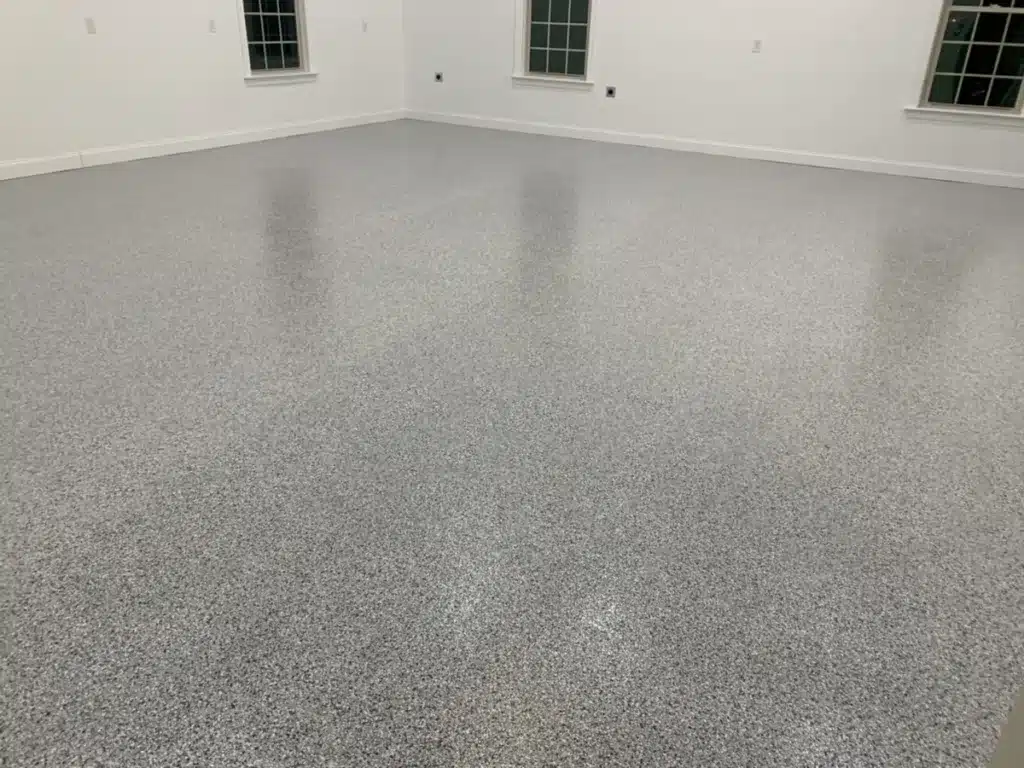
Disadvantages of Polyurea vs Polyaspartic Coatings?
Application Complexity
Applying polyurea and polyaspartic coatings requires skilled and experienced technicians due to the fast curing nature of the material. The application process involves high-pressure spraying, and proper thickness and even coverage are essential for optimal results.
Cost
Both types of coatings can be relatively expensive due to the specialized material and equipment required for application. Although still pricey, polyurea coatings are usually more affordable than polyaspartic coatings.
Pot Life and Rapid Curing
Polyurea and polyaspartic coatings have a short pot life, meaning they must be applied quickly after mixing. Their rapid curing time may also limit the working time, making it difficult to apply over large surfaces, or increasing the risk of uneven coating across the floor.
Polyurea vs Polyaspartic Floor Coatings
Polyurea and polyaspartic floor coatings represent two advanced options for achieving durable, attractive, and long-lasting surfaces. While both coatings offer numerous advantages, they come with distinct characteristics and limitations. Polyurea coatings excel in rapid curing times, insensitivity to moisture, and suitability for a wide range of applications. On the other hand, polyaspartic coatings stand out for their exceptional UV resistance, flexibility, and glossy finish.
Choosing between polyurea vs polyaspartic coatings should be based on the specific requirements of the project, including budget, timeline, environmental conditions, and aesthetic preferences. Professional consultation and careful consideration are essential to ensure a successful and well-suited flooring solution.

